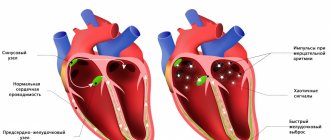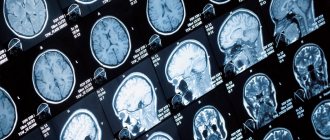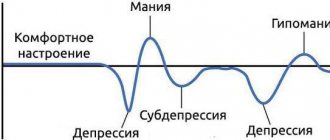— How does the LHC differ from the Tomatis method, micropolarization? How do they fit together?
BAC is the impact of an acoustic signal, coordinated with the functional activity of the brain in real time, to activate the work of regulatory structures. Micropolarization is exposure to direct currents to stimulate the central nervous system. The signal used in the Tomatis method, unlike the LHC, is not consistent with the functional activity of the brain at the current time, and therefore is not as effective. BAK has a more targeted and natural effect on the body. At the same time, BAC is combined with polarization, reducing the risk of side effects (it is not recommended to do it on the same day), and with Tomatis (it can be done on the same day).
Indications and contraindications
A course of bioacoustic therapy can be prescribed by a neurologist, psychiatrist, psychologist, pediatrician or other specialist. Most often, the procedure is used to relieve symptoms of the disease and improve the patient’s psychological well-being.
Possible indications:
- Mental retardation in a child. Mental retardation is a common diagnosis in pediatric neurology. In this case, it is necessary to influence speech development and other cognitive abilities to achieve the best results.
- Various types of sound reproduction disorders and general speech underdevelopment (GSD). These are dyslalia, embolophrasia, dyslexia, alalia and other disorders. BAC is also prescribed for dysarthria.
- Diseases affecting written speech. First of all, it is dysgraphia.
- Childhood mental disorders affecting cognition and socialization. For example, autistic syndrome requires acoustic therapy, since such treatment restores the child’s mental development. Attention deficit and hyperactivity disorder is also an indication for treatment.
- Various types of neuroses that cause headaches, anxiety and depression.
- Traumatic brain injuries affecting memory, intelligence and emotions.
- Organic brain damage and its consequences. LHC can be performed only after rehabilitation.
The procedure is contraindicated in severe cardiovascular diseases, psychosis, epilepsy and recent stroke. A consultation with a doctor at the clinic will allow you to clarify individual indications and exclude the presence of contraindications. Therapy can be completed in Moscow after initial diagnosis.
Indications for use
The list of indications for the LHC method is quite extensive and varied. In fact, everything is connected to the brain, so it would not be a bad idea for any patient to be in the office of a physiologist conducting such a procedure, but the method focuses primarily on serious disorders of the central nervous system.
There are good results in the treatment of such serious anomalies as sensorimotor alalia and temporary age-related disorders.
Indications for BAC:
- sleep disturbances, insomnia, nervous nightmares;
- head injuries resulting in disturbances in the functioning of the central nervous system;
- all autism spectrum disorders;
- developmental delay regardless of the underlying causes;
- neuroses, psychoses, consequences of psychological trauma;
- hyperactivity syndrome, lack of concentration;
- tremor, tic, neurotic fixated body movements (unconscious), including those dangerous for the child himself;
- speech disorders and disorders;
- degenerative processes of the central nervous system;
- disturbances in the perception of information (dysgraphia, etc.);
- long-term lack of success in social adaptation.
All these are general concepts; within each there are several separate diseases or abnormalities, which are often found in children from birth or they received insufficient attention from their parents in the process.
Attention to the children's psyche has increased significantly over the past two decades and the population is finally beginning to seriously worry about the mental health of their children. The demand for physiological therapies like BAC is the best proof of this.
What are the indications for the LHC method in adult neurology?
- Relieving “chronic fatigue” syndrome. Eliminating the effects of stress. Post-traumatic stress. "Loss Syndrome"
- Treatment of neurotic, neurological disorders. Treatment of mental disorders (anxiety syndrome, phobic syndrome (panic attacks), astheno-depressive syndrome). Treatment of emotional disorders: anxiety, restlessness, increased irritability, fatigue, decreased performance, internal tension, decreased mood. Treatment of sleep and appetite disorders.
- Vegetative-vascular disorders (both diencephalic in nature and parasympathetic crises).
- Consequences of stroke, organic brain damage, traumatic brain injury: restoration of cognitive functions and speech disorders, normalization of psychophysiological status.
What contraindications should you keep in mind?
- acute postoperative period;
- hypertensive crisis;
- acute infectious diseases;
- acute disorders of cerebral and spinal circulation;
- myocardial infarction in the acute period;
- acute and subacute inflammatory diseases of the brain and spinal cord, its membranes (myelitis, meningitis, etc.);
- acute bleeding.
What is BAK?
Bioacoustic correction (BAC) is an innovative method of influencing brain structures using a special computer program that can convert brain signals obtained from a person’s electroencephalogram into sound.
During the session, the patient literally listens to the “programmed music” of his brain. But the most important thing is that with the reverse effect of sound on the neurons of the brain, involuntary self-regulation of the body occurs, which can be observed in real time using an electroencephalogram. Bioacoustic brain correction combines the latest technologies of neurotherapy and biofeedback. Bioacoustic correction, being an effective, non-invasive and non-drug method of rehabilitation of patients used at the CORTEX medical center. It is aimed at restoring the functional state of the central nervous system and mobilizing the body’s natural reserves, helps to increase the effectiveness of medical rehabilitation in complex therapy with biophysical activation of neuromotor structures, and can be used independently for a number of diseases.
Is this method effective?
The effectiveness of the method has been confirmed:
- 25 years of scientific research at the Federal State Budgetary Institution “Research Institute of Experimental Medicine”, Northwestern Branch of the Russian Academy of Medical Sciences (FGBU “NIIEM” NW RAMS), Northwestern State Medical University named after. I.I. Mechnikov, State Institute for Advanced Training of Doctors of the Ministry of Defense of the Russian Federation, St. Petersburg State Pediatric Academy, Russian Scientific Center for Medical Rehabilitation and Balneology of the Ministry of Health of the Russian Federation;
- Clinical trials and medical practice at: State Research Institute of Emergency Medicine named after. N.V. Sklifosovsky, No. 2 FBU “3 TsVKG im. A.A. Vishnevsky Ministry of Defense of Russia", MAPO (St. Petersburg), State Autonomous Institution of the Republic of Tatarstan Emergency Hospital (Regional Vascular Center) Tatarstan and in a number of other leading clinics in Moscow and St. Petersburg;
- The research results are presented in scientific articles and defended in dissertations.
How does the ZPR transfer to the UO?
Defects in mental activity with a delay in mental retardation tend to transform both towards progress and towards regression. For example, there are cases where a child in an orphanage, as if in a frozen state, does not walk, does not talk, freezes at one point, being adopted by a prosperous family, literally in a week learns all the skills appropriate to his age. He is quickly gaining weight and improving his communication skills.
On the other hand, a slowdown in the rate of development can increase, exacerbating its manifestations. In addition, the term ZPR is applicable only for preschoolers and primary schoolchildren. If, after primary school age, signs of mental retardation persist, then it goes into the category of mental retardation.
The main role in the progression of symptoms of mental retardation is played by untimely or completely ignored measures to correct the condition. It is very important to begin corrective treatment for such children as early as possible. It requires special training. Regular schools cannot create the necessary conditions to accept such children. When time is lost, existing defects deepen on all fronts:
- Cognitive processes - attention, perception, memory - are further distorted, which inevitably leads to a decrease in intellectual activity;
- both written and oral speech do not progress. The child is not able to receive information from the outside in sufficient quantities, which is why he withdraws into himself. Communication ties with the world are severed. Establishing contact with peers and family members becomes almost impossible. Thus, the baby self-isolates and withdraws into himself;
- Due to the regression of cognitive abilities, it is difficult for children with advanced forms of mental retardation to master even basic skills. There is no natural age-related change in activity from play to learning;
- the emotional sphere is deteriorating. The child becomes labile and does not control his emotions.
Relationships with parents, in particular with the mother, play a special role. Feeling irritation, lack of support, and love on her part, kids turn into capricious, touchy and stubborn bullies, or fall into a stupor. The lack of emotional connection gives rise, in addition to personal degradation, to fears and anxiety.
In general, children lose touch with the world around them. In the future, it becomes difficult for them to adapt to the team, decide and get a profession, and establish interpersonal relationships. The advanced stage of mental retardation makes the child infantile, uncontrollable, distracted and helpless, and can lead to traits corresponding to mental retardation.
ADHD and bioacoustic correction (BAC)
Attention deficit hyperactivity disorder (ADHD/ADHD)
Attention deficit disorder with hyperactivity (ADHD/ADHD) is a disorder of behavior and attention in childhood and adolescence, which currently represents a pressing medical and social problem. According to most domestic and foreign researchers, this disease occurs in 5-20% of the child population. The relative prevalence of the syndrome among boys is higher than among girls and fluctuates around 5:1. ADHD is diagnosed, as a rule, in childhood, and with the start of school, the number of diagnosed cases increases like an avalanche. The syndrome plays a significant role in the occurrence of school and social maladjustment.
Researchers and doctors note the duration of the syndrome: in more than half of the children who suffered from this disease in primary school, this syndrome persists into adolescence, and in 30-70% it does not disappear into adulthood. Such children constitute a risk group for the development of addictive disorders (withdrawal from reality) and deviant behavior (sustained behavior deviating from generally accepted, most widespread and established social norms.), can become a harbinger of a number of personality disorders, contributes to the development of alcoholism, drug addiction, gambling addiction, antisocial behavior (propensity to commit crimes)
The origin of this syndrome and how this disorder occurs are not yet well understood. But the risk factors for ADHD are known, and one should always keep in mind the possibility of several factors influencing each other. They can occur at different periods of time: in the antenatal period - intrauterine infections, acute and chronic diseases of the expectant mother, various intoxications, radiation, stressful situations; in the intrapartum period - unfavorable factors in the process of labor: premature birth, birth by cesarean section, stimulation of labor, long anhydrous period, low Apgar score; in the postnatal period - prematurity, low body weight, neuroinfections and trauma to the child; in addition, the male gender of the child is a factor that increases the risk of the disorder.
There are also evolutionary (brain development) and genetic factors that can influence the occurrence of this syndrome. From the point of view of evolutionary factors, ADHD arises from disturbances in the morphological and functional maturation of the brain. Research into genetic mechanisms has shown that twins and close relatives are more likely than other cases to have increased similarity of disorders in this area. According to Biederman, Faraone (1990), the risk of developing ADHD is 31.5% for relatives of patients with this disease.
Among the psychosocial factors influencing the occurrence and development of ADHD are the following: a young mother and a mother suffering from alcoholism, a negative environment for the child at school and at home, unpreparedness of parents for family life, frequent conflicts in the family, single-parent family. Intensification of the educational process (constant increase in the pace and size of the teaching load), early start of preschool education, inconsistency of the educational program and technologies with the functional and age characteristics of children, non-compliance with basic physiological and hygienic requirements for the organization of the educational process).
It has also been established that unfavorable environmental conditions can also be important.
It is believed that children with ADHD have a low level of arousal due to a weakened perception of sensory stimuli of all modalities that affect the central nervous system (brain). This may be a consequence of decreased noradrenergic activity in certain areas of the brain. As a result, the child becomes involved in stimulus-seeking behavior, demonstrating intense but short-lived interest in new stimuli.
Thus, ADHD may reflect characteristics of the processing of received information, and, therefore, the perception of the surrounding world and the way to respond to it. A characteristic feature of the syndrome is a decrease in the level of motivation and weakening of efforts aimed at solving problems that seem boring, insignificant or too difficult.
Attention deficit hyperactivity disorder is divided into three types:
1. With a predominance of inattention and/or pathological distractibility.
2. With a predominance of impulsiveness, expressed in the inability to suppress or slow down the response.
3.Combined.
There are also three symptom complexes of ADHD manifestations. Each symptom complex consists of a set of signs:
“Inattentiveness”: 1. The child is often unable to maintain attention to details; due to negligence and frivolity, he makes mistakes in school assignments, work and other activities. 2. Usually has difficulty maintaining attention when completing tasks or playing games. 3. Often one gets the impression that the child does not listen to speech addressed to him. 4. Often the child is unable to adhere to the proposed instructions and fully cope with lessons, homework or duties at the workplace (which has nothing to do with negative or defiant behavior, or an inability to understand the task). 5. Often has difficulty organizing independent completion of tasks and other activities. 6. When required to perform tasks that require long-term mental stress (for example, school assignments, homework), he usually avoids it, expresses dissatisfaction, or resists it. 7. Often loses things needed at school and at home (for example, school supplies, pencils, books, work tools). 8. Easily distracted by extraneous stimuli. 9. Is often forgetful in everyday situations.
“Hyperactivity”: 1. The child often has restless movements in the hands and feet; sitting on a chair, spinning, spinning. 2. Frequently gets up from his seat in class during lessons or in other situations where he must remain seated. 3. Often exhibits aimless motor activity: runs, spins, tries to climb somewhere, and in situations where this is unacceptable. 4. Usually cannot play quietly or quietly or do leisure activities. 5. Is often in constant motion and behaves “as if he had a motor attached to him.” 6. Is often talkative.
"Impulsivity": 1. Often answers questions without thinking, without listening to them completely. 2. Usually has difficulty waiting his turn in various situations. 3. Often interferes with others, pesters others (for example, interferes in conversations or games).
The main complaints of children and their parents when contacting specialists are difficulties concentrating and controlling behavior, and learning difficulties. Children are extremely active, restless, cannot sit still during class, are constantly distracted, and defects in concentration cause low academic performance in children with ADHD, despite a fairly high level of intelligence. Parents note in children a lack of interest in most existing types of activities, especially studying at school, poor academic performance, excessive physical activity, increased excitability, emotional lability, and disobedience. Autonomic and somatic disorders, the degree of their severity in each individual case is different and the set for each individual child is individual: polymorphic vegetative disorders - increased sweating, acrocyanosis (bluish coloration of the skin associated with insufficient blood supply to small capillaries), pulse lability, vegetative-vascular dystonia , weather dependence. Parents note transient or chronic fears, sleep-speaking, bruxism (periodically occurring episodes of involuntary contraction of the masticatory muscles, accompanied by clenching of the jaws and grinding of teeth), enuresis, fears of the dark and loneliness, moderate sensorimotor and speech disorders, and perception disorders. In terms of general intellectual development, children with this diagnosis are at the normal level or, in some cases, subnormal, but at the same time experience significant difficulties in school learning and social adaptation.
The most common concomitant diseases of ADHD are: tics, Tourette's syndrome (hyperkinesis, shouting, echopraxia), tension headaches. There is a high incidence of various speech disorders in children with ADHD. The child begins to speak late; during the formation of speech, disturbances often arise, which are not always immediately noticed, attributing them to age-related characteristics. Partial developmental delays (infantilism) are noted, including school skills (writing, counting, reading). The presence of dyspraxia (a kind of movement disorder, “clumsiness”, in which there is no paralysis or disturbances in muscle tone, but the child experiences difficulty in coordination and performing complex movements) is noted in 85% of children with ADHD. With ADHD, emotional disturbances are often observed: the child’s emotional development, as a rule, is delayed, which is manifested by imbalance, hot temper, and intolerance to failures. As a rule, relationships with others are disrupted: both peers and adults. Rejection of such children by others can lead to the formation of self-doubt and low self-esteem. As a result, a state of constant tension develops, which is externally manifested by neurotic symptoms: finger sucking, nail biting, sleep and appetite disturbances. Particular attention should be paid to oppositional disorder (disobedience, hostility), since this condition is characterized by pronounced social maladjustment.
Neurophysiological studies in children with ADHD are carried out mainly using electroencephalographic examination methods.
What are the ways to correct brain function in ADHD? The most well developed methods of pharmacological therapy. However, neuropharmacological correction has a number of contraindications and side effects: addiction to the drug, withdrawal syndrome, short-term action, leading to long-term and sometimes lifelong use of the drug, primarily when using psychostimulants.
The disadvantage of psychological correction is the lack of objective criteria for assessing the condition of children.
In this regard, there is an increasing need to search for methods addressed to the neurophysiological mechanisms of adaptive restructuring of integrative brain systems that contribute to the restoration of impaired physiological functions.
Today, world research and treatment and preventive practice has shown the promise and effectiveness of using adaptive self-regulation (AS) methods with external feedback on the parameters of bioelectrical activity of the brain for the diagnosis and correction of disorders in children with ADHD. The prerequisites for the creation of methods for self-regulation of the rhythmic activity of the brain come from studies that have shown that the central nervous system (CNS) can regulate not only the physiological functions of the body, but also its own activity.
Since 2002, at the Research Institute of Experimental Medicine of the Northwestern Branch of the Russian Academy of Medical Sciences, a study has been conducted on the effectiveness of using BAC for the rehabilitation of children with attention deficit hyperactivity disorder (ADHD) without the use of medication correction methods.
The data were obtained as a result of a comprehensive examination of 53 children diagnosed with attention deficit hyperactivity disorder. Of these, 41 (77.6%) were boys, 12 (22.6%) girls. Average age of children 8-9 years
When analyzing the anamnesis of the examined children, data were obtained confirming the concept of a multifactorial etiology of the disorder.
In order to identify factors of early brain damage, when analyzing anamnesis data, importance was attached to clarifying information about the course of pregnancy, childbirth, and the neonatal period.
The course of BAC was accompanied by a significant decrease in the number of clinical signs compared to the initial examination in 43 patients (81.13%). Positive dynamics of all indicators were revealed (Fig. 1): the number of signs of inattention significantly decreased in 48 children (90.56%). The number of signs of hyperactivity significantly decreased in 45 patients (84.9%). The number of signs of impulsivity decreased in 45 patients (84.91%).
Conducting BAC sessions led to a significant improvement in indicators of attention function in both boys and girls (see table). The number of omissions of significant stimuli (inattention errors) and the number of false reactions (impulsivity errors) decreased, and the dispersion of response time also significantly decreased.
The improvement in clinical manifestations was accompanied by a significant reorganization of BEA ( bioelectric activity ). Moreover, the reorganization of rhythms went towards normalizing the EEG structure. And, most importantly, it is effective in all initially identified subgroups of children with ADHD being examined.
Average values of test scores for quantitative assessment of disturbances in attention function
| Indicators | Group averages | Boys | Girls | |||
| Before the course | After the course | Before the course | After the course | Before the course | After the course | |
| Errors of inattention | 16,07±2,35 | 4,38±1,04*** | 15,9±2,67 | 4,5±1,27*** | 17,25±5,45 | 4,08±1,81*** |
| Mistakes of impulsivity | 14,6±2,2 | 4,4±0,9*** | 15,1±2,64 | 4,73±1,11*** | 13,25±1,81 | 3,33±1,31*** |
| Response time (ms) | 550,4±41,6 | 512,3±22,08* | 537,2±39,98 | 522±16,79 | 632,4±98,35 | 518±28,86* |
| Response time variance (ms) | 114,3±13,67 | 82,6±3,98*** | 108,2±15,37 | 82,5±3,46*** | 141,3±26,59 | 88,75±5,99*** |
*** - significant differences in the test scores for quantitative assessment of attention dysfunction in the study group (boys and girls) after the LHC course compared to the scores before the sessions
After the main course of BAC, 5 children were under observation for a number of years. Breaks between sessions: 3 months, six months, a year, more than 3 years. 2 children were observed for 10 years, 1 patient was observed for 12 years. During diagnostic examinations, it was revealed that the BEA parameters remained stable, and further development of the EEG took place in accordance with normal ontogenetic maturation. There were no complaints of inattention, hyperactivity, or school maladjustment.
CONCLUSIONS
The use of BAC in children with ADHD significantly reduces the number of clinical signs and reduces the severity of symptoms of the disease.
- According to the psychophysiological test for attention, the use of the LHC optimizes the function of attention, which is manifested by an improvement in specific indicators of attention - a decrease in the number of errors, omission of significant stimuli, and control of impulsivity.
- During the LHC procedures, the bioelectrical activity of the brain is normalized. The alpha rhythm index increases, it becomes structured; the ratio of the power of the theta rhythm to the beta rhythm in the frontal regions of the brain significantly decreases; the level of interhemispheric asymmetry decreases.
A significant improvement in psychophysiological indicators was found in 81%-92% of the children studied.
The article was written based on the materials of the methodological manual of St. Petersburg State Pedagogical Academy









